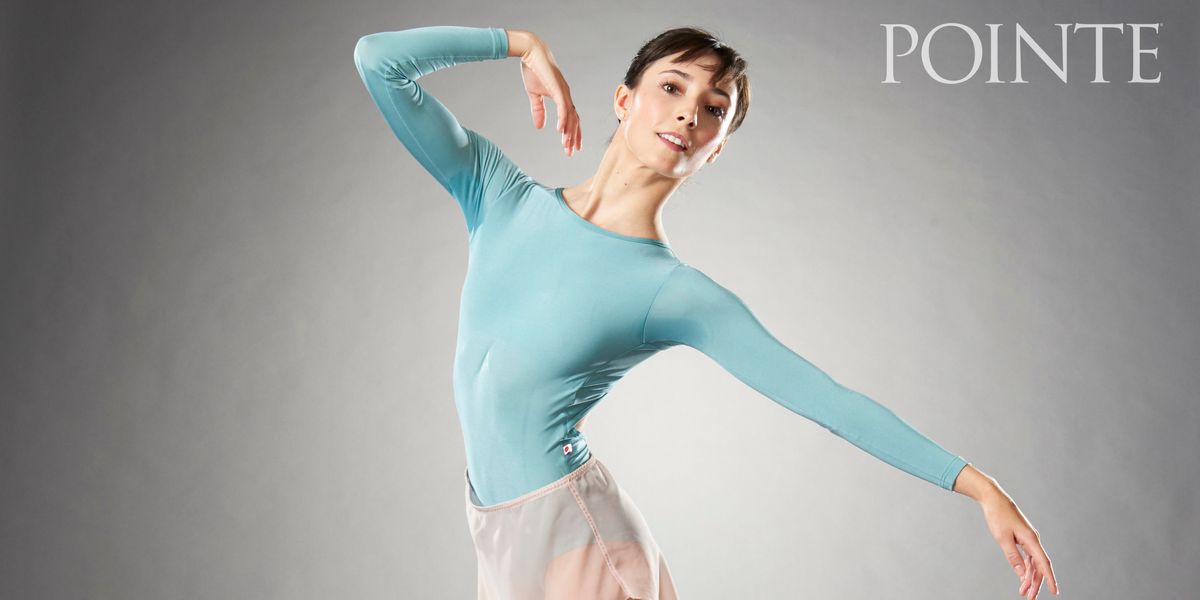Taking Chances: San Francisco Ballet's Jahna Frantziskonis
This is Pointe’s February/March 2017 Cover Story. You can subscribe to the magazine
here, or click here to purchase this issue.
Most vacations don’t turn into the job of a lifetime. But that’s exactly what happened when Jahna Frantziskonis took company class at San Francisco Ballet in the spring of 2015.
“I had never been to San Francisco or seen the company besides on video,” explains Frantziskonis, 23. She had come to the city to visit her younger brother, Elias, an SFB School student at the time. “He said, ‘Just come, take a class, see what happens.’ ” Less than a week after she got back to Seattle, where she was a second-year corps dancer at Pacific Northwest Ballet, she had received an invitation to join the SFB corps.
“It was very unexpected,” she says, seeming to still marvel at the outcome nearly two years later. But artistic director Helgi Tomasson confirms that hiring her was no fluke. He immediately noticed three qualities every SFB dancer needs: stage presence, musicality and versatility. “I could see her fitting very well into the repertory we have, in the classical, neoclassic and contemporary,” he says of her accidental audition.
 Frantziskonis with Benjamin Griffiths in Balanchine’s “Rubies” at PNB. Photo Courtesy PNB.
Frantziskonis with Benjamin Griffiths in Balanchine’s “Rubies” at PNB. Photo Courtesy PNB.
Frantziskonis proved him right. Her first season was filled with debuts, from the first cast of Mark Morris’ Drink to Me Only With Thine Eyes, to Prayer in Balanchine’s Coppélia, to her season-ending success as Olga in John Cranko’s Onegin. Throughout, she enchanted audiences with effortless turns and sprightly jumps, sensitive musicality and soubrette charm—not to mention enormous, expressive eyes that rival Audrey Hepburn’s.
While the roles were new to her, the spotlight was not. At PNB, she had already performed the principal pas de deux in Balanchine’s “Rubies,” the pas de trois in “Emeralds” and Cupid in Alexei Ratmansky’s Don Quixote, and created roles in Justin Peck’s Debonair and Twyla Tharp’s Waiting at the Station.
“It’s so natural for Jahna,” says PNB artistic director Peter Boal of her technique. “There are some people you like to take credit for having coached, but you realize that anyone could have done it—they were going to get there on their own.”
A Tucson, Arizona, native, Frantziskonis has been single-minded about ballet since her first toddler class at the YMCA. At age 5 she enrolled at Ballet Arts Tucson and trained with owner and former Cleveland Ballet principal Mary Beth Cabana, then finished high school in three years in order to train in PNB School’s Professional Division at 16.
“I always felt, from the very beginning, that she was very, very special,” recalls Cabana, who also trained PNB soloist Margaret Mullin and Houston Ballet demi-soloist Aaron Daniel Sharratt. “She showed a particular intelligence for ballet, and she was very open to expressing herself within her dancing. You could see that every fiber in her being really loved what she was doing.”
Frantziskonis credits Cabana with developing her solid technical base and her enthusiasm for risk-taking. “I’m not a very scared dancer, and I think that’s why. She just gave you the freedom to try.”
She also took a variety of classes, including tap, Fosse-style jazz and contemporary dance. A decade of piano lessons, first in classical and then in improvisational jazz, put musicality literally at her fingertips. “I can recognize structure in difficult pieces,” she explains. “Sometimes I’ll hear different notes, and I’ll base my musicality off of that.”
 Frantziskonis with max Cauthorn in Christopher Wheeldon’s “Rush” with SFB. Photo by Erik Tomasson, Courtesy SFB.
Frantziskonis with max Cauthorn in Christopher Wheeldon’s “Rush” with SFB. Photo by Erik Tomasson, Courtesy SFB.
In spite of her skill and talent, the 5′ 2 3/4″ Frantziskonis had a sizable obstacle to overcome. “Around the time I started dancing on pointe,” she remembers, “teachers and peers started telling me that my height would hold me back from a professional career.” Discouraged but determined, she put in extra time with Cabana to refine her feet, strengthen her turnout and create the longest possible lines. “I really encouraged her to think about herself as if she was an Amazon, to dance really big and bold,” Cabana says. “And to understand that she had so many other qualities to be a wonderful artist.”
Boal noticed those qualities when Frantziskonis performed in the Professional Division recital. “How she held the stage, her presence—it made me do a double take,” he recalls. He took her under his wing, and the two became close as he cast and coached her in increasingly significant roles. “I really looked on Jahna from the very start as a future principal dancer with the company,” he says, so her departure was a shock.
By nature adventurous and curious, and hungry for new artistic opportunities, Frantziskonis was eager to take her chances on SFB. But she also felt a deep attachment to the director who had shaped her as a dancer. “I knew that Peter would change my mind if I told him that I had a job offer, because I love him,” she says. “But I decided this was an opportunity that I don’t know will ever come again.” So she signed her SFB contract before telling him of the offer.
“He took it well,” she recalls, “and then ended up calling me back into his office to tell me that he was really upset.” Boal was disappointed to lose such a promising dancer, but he also knows it’s the nature of the business. “Directors have to recognize that dancers call some of the shots, and that they have a voice and choices,” he says. “I love it when I’m included. But you want the best for somebody, and I’m happy for her success. It was the right decision.”
 Frantziskonis with her brother, Elias. Photo Courtesy Frantziskonis.
Frantziskonis with her brother, Elias. Photo Courtesy Frantziskonis.
Nothing, however, had prepared the admittedly starstruck Frantziskonis for dancing alongside idols like Maria Kochetkova, Yuan Yuan Tan, Frances Chung and Lorena Feijoo. “When I did Olga, Yuan Yuan was Tatiana,” she says. “I was preparing backstage and I had this moment of, Whoa, where are you right now?”
She’s learned to talk herself through those stressful moments, and adjusted to life in a larger company (PNB has 47 dancers, while SFB has 73). But learning the sheer volume of choreography can still feel overwhelming. SFB performs about 30 Nutcracker shows annually, followed by a five-month, eight-program season; 2017 brings three full-lengths and five mixed bills, including four world premieres.
“It’s known as the ‘SFB thing,’ ” she says of the company’s notoriously fast rehearsal process. She’s found that there’s no easy way to get all that rep in her body and mind: “You seriously just do it.”
Principal dancer Lorena Feijoo, who tends to keep an eye on Frantziskonis when teaching company class, has faith that she will meet the challenges, and master them. “Jahna has something you can’t teach,” observes Feijoo. “She is an artist.” Thinking back to last season’s principal role in Liam Scarlett’s dark, aggressive Fearful Symmetries, she says that “when Jahna walked onstage, she was on fire. It was like an explosion. For a corps member of that age to do that, it shows you that she’s a little ahead of the game.”
The next time Frantziskonis finds time for a vacation, she’d love to visit Elias in the Netherlands, where he is a trainee at Dutch National Ballet. But don’t expect another job change.
“I get to do what I love every day,” she says of life at SFB. “That’s my biggest goal: What’s making me happy, pursue it. Right now, ballet is really giving me that.”






